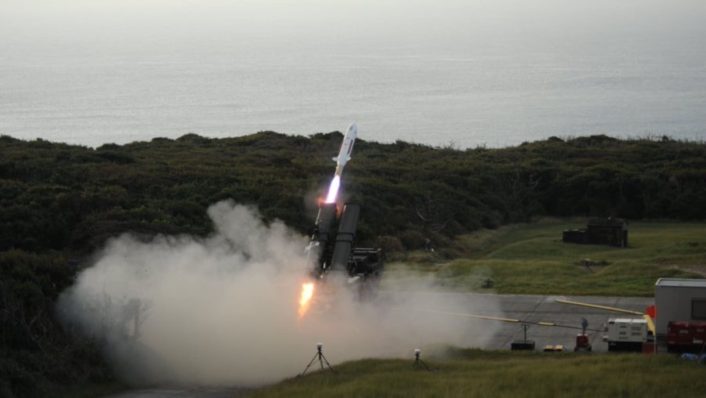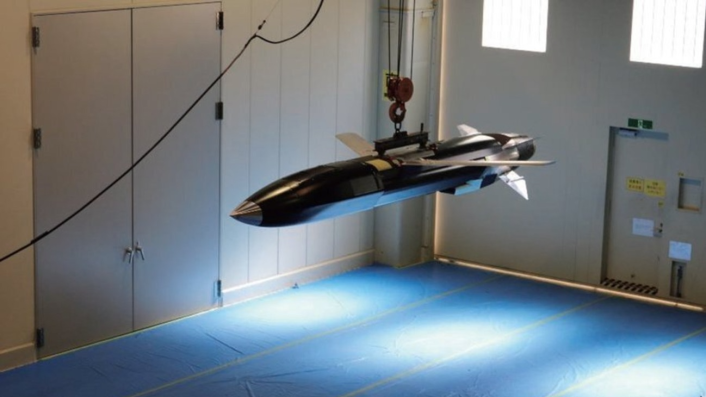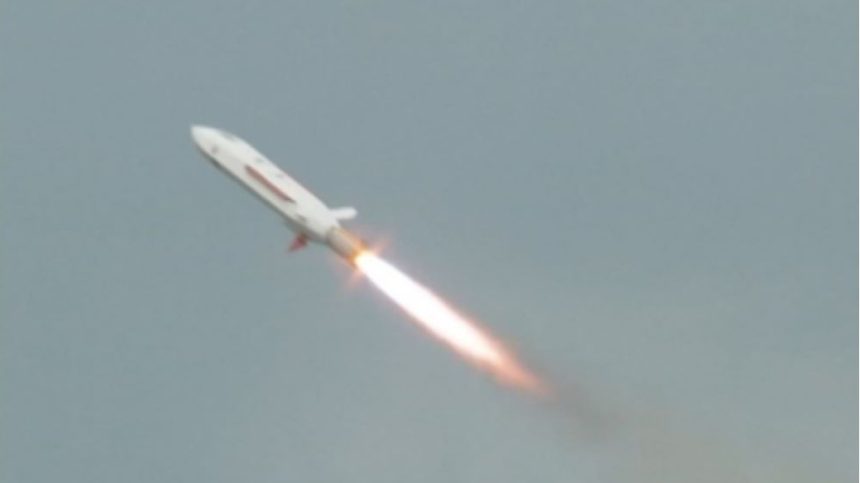The new Type-12 SSM has ‘improved capability’ to be launched from both ground launchers and ships, and offers a stand-off defense capability to prevent and eliminate invading forces at an early stage and at a long distance.
A little over four months after Japan unveiled its upgraded Type-12 SSM (Surface-to-Surface Missile) late in July 2024, Japanese military authorities on Dec. 6 revealed the first images of the system’s test-fire that took place in a series of demonstrations between October and November.
The tests took place from the Aviation Equipment Research Institute in Niijima, Japan’s MoD (Ministry of Defense) said. Japan had allocated $235 million for the project in its 2023 budget to develop a longer range and more advanced version of its existing Type-12 AShM (Anti-Ship Missile).
While sharing the images of the live test-firing on X, Tokyo’s ATLA (Acquisitions Technology and Logistics Agency) said that the new Type-12 SSM has “improved capability” to be launched from both ground launchers and ships. This is in order “to quickly build a stand-off defense capability that can prevent and eliminate invading forces against our country at an early stage and at a long distance.” “We will continue to work on the early construction of stand-off defense capabilities,” the post said.
The statement added that the development of the Type-12 SSM’s ground, ship and air-launched versions is scheduled to conclude by fiscal years 2025, 2026 and 2027 respectively. This new Type-12 SSM can be expected to be fired from the JASDF’s heavy-hitting F-15Js, also poised to operate the AGM-158B JASSM-ER (Joint Air-to-Surface Standoff Missile-Extended Range) that Japan has contracted from the U.S.
#防衛省・自衛隊 は、我が国への侵攻部隊を早期・遠方で阻止・排除するスタンド・オフ防衛能力を早期に構築するため、国産スタンド・オフ・ミサイルである12式地対艦誘導弾能力向上型(地発型・艦発型)の発射試験を行いました。引き続きスタンド・オフ防衛能力の早期構築に取り組んでまいります。 pic.twitter.com/3sHtABuU5Y
— 防衛装備庁 (@atla_kouhou_jp) December 6, 2024
The JMSDF also recently launched one of its most advanced home-built Mogami-class destroyers, and it would not be far-fetched to presume the warship envisaged to fire the new Type-12. The statement meanwhile reiterated the commitment towards the “early establishment” of “stand-off defense capabilities.”
Japan has also advanced the timeline to deploy the Tomahawk missiles from the U.S. from FY2026 to 2025, according to documents. Another interesting project is the development of a “multipurpose” missile, with interchangeable warheads and modular architecture to install new guidance systems to serve attack, reconnaissance radar jamming purposes.
The test
Developed by MHI (Mitsubishi Heavy Industries), Japan conducted a total of five test firings of the improved Type-12 between Oct. 4 and Nov. 1, 2024 at the Aeronautical Equipment Research Institute on Niijima Island. Of these, three test firings were held on Oct. 4, Oct. 14 and Oct. 17, and the missile employed was the ground-launched version.
Subsequently, the remaining two further tests were held on Oct. 28 and Nov. 1, 2024, this time using the ship-launched version. The current Type-12 is a derivative of the older Type 88 anti-ship missile.

Images released by ATLA showed the missile leaving one of two canisters on a truck-mounted launcher, with a short booster section and the folding wings not yet deployed. Another image showed plumes coming from the main exhaust, meaning the booster had been dropped and the wings were unfolded.
The missile also appears largely similar to the images published in the Japan MoD’s defense white paper for the year 2024. The missile has X-shaped tail fins and a ventral air-intake for the air-breathing engine. As The Aviationist had reported, those images appeared to be from wind tunnel tests, given the background seen in the pictures.
Some assessments mentioned that Japan hopes the new version of the weapon will have a range of 900 km and eventually up to 1,200 km. The original Type-12 meanwhile, a successor to the Type-88, has a range between 200 to 400 km. The hexagonal shape of the missile also suggests low-observable shaping for reducing RCS (Radar Cross Section). Another feature is the Up to Date Command, which allows the missile to receive targeting information via satellite communications while in flight, according to Naval News.
12式地対艦誘導弾能力向上型(地発型・艦発型)最初の発射試験が実施された。
地発型は2025年度まで、艦発型は2026年度まで、空発型は2027年度までに開発を完了する計画。
ぜひとも抑止力としてのスタンド・オフ防衛能力の早期構築を。 https://t.co/I1HCLfUOIa pic.twitter.com/qPV8EhWK2h
— 黄門市長👴🏻 (@khomonshichyo) December 6, 2024
Capabilities
Going by emerging international military practices, it is possible the Japanese might expect the missile to have secondary land-strike capabilities as well. This will possibly entail a different seeker. Usually, EO (electro-optical) seekers with image matching and referencing technology are used for land attack roles.
But it also remains to be seen whether the ship-killing and land-attack missiles would be the same weapon, simply repurposed for the role, or a separate variant altogether with the suitable avionics. However, given the fact that the missile is being developed from ground up, the designers would simply prefer having different variants for the different roles, with the appropriate technology.

The MoD added that the purpose of the test was to acquire “data necessary for the development” of the improved Type-12. The missile therefore can be called a prototype, far from the serial production stage, with some engineering and research work remaining, before a configuration is finalized for serial production.
Older Type-12
The baseline Type 12 can be said to be comparable to ship and air-launched capable RGM-84 Harpoon AShM. The improved Type-12 meanwhile is largely similar to the British-French Storm Shadow/SCALP-EG or the Norwegian NSM (Naval Strike Missile). It is not clear if the latest test involved the missile striking any live target or the nature of the testing parameters.
In Jul. 2023, Japan test-fired the older version of the Type-12 from Australian territory during the Talisman Sabre military exercise. Fired from a truck-mounted system at Beecroft Weapons range in New South Wales, the missile, which did not include explosive warhead, was aimed at an unmanned target in the East Australia Exercise Area, off the coast of Jervis Bay.









